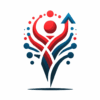Training and staff development are vital components of human resource management. As companies evolve and face new challenges, it is essential that employees are well-prepared to address them. Identifying when staff requires training is a crucial aspect of human resource management, and in this detailed article, we will explore the signs indicating that your team needs to acquire new skills and knowledge. Additionally, we will provide strategies for planning and executing effective training and development programs.
Introduction
Training and ongoing development are fundamental to an organization’s growth and the success of its personnel. When employees are well-trained, they are more competent, confident, and engaged in their roles. However, it is crucial to identify the signs indicating when an investment in training is needed to ensure that staff is equipped to meet the ever-changing challenges of the business environment. Below are some clear signs that your team requires training:
1.- Decreased Performance
One of the most obvious signs that staff requires training is a decrease in job performance. If you notice that employees are not meeting their objectives or that the quality of their work has declined, it’s time to assess whether they need to acquire new skills or knowledge to perform their tasks more efficiently.
2.- Difficulty Adopting New Technologies
Today’s business environment is constantly evolving, with technology playing a pivotal role in this evolution. If employees exhibit resistance or difficulties in adopting new technologies or tools, it is a sign that they need training to stay current and competent in their work.
3.- Lack of Technical or Professional Skills
If team members lack the technical or professional skills necessary to perform their functions, this is a clear indication that they require training. This may include industry-specific skills, technical competencies, or specialized knowledge.
4.- High Error Rates
An increase in error rates or the number of issues in the workplace can indicate that employees are not fully prepared for their roles. Training can help reduce errors and improve accuracy in task performance.
5.- High Employee Turnover
High employee turnover can be a sign that employees are not satisfied with their development opportunities within the company. Offering training and development programs can help retain employees and foster their professional growth.
6.- Negative Customer Feedback or Dissatisfied Clients
If customers express dissatisfaction with the products or services provided by your team, it may be indicative of a need for improved skills and knowledge among your staff. Training can help address these concerns.
7.- Delays or Inefficiencies in Processes
Consistent delays or inefficiencies in workflow processes may signal that employees lack the necessary skills to perform their tasks effectively. Training in processes and work methods may be the solution.
8.- Changes in Role Expectations
As roles and responsibilities evolve within the company, it is essential that employees are up-to-date and prepared to meet new role expectations. Changes in role expectations may necessitate additional training.
Strategies for Identifying Training Needs
Now that we’ve identified the signs indicating that staff needs training, it’s important to implement effective strategies for pinpointing the specific training needs within your team. Here are some strategies you can use:
1.- Performance Assessments
Regular performance assessments are a valuable tool for identifying areas where employees may need training. Managers can discuss employees’ goals and challenges, which can reveal development opportunities.
2.- Employee Surveys and Feedback
Seeking feedback from employees themselves can be an effective way to identify areas where they feel they need more training or development. Surveys and feedback sessions can provide valuable insights.
3.- Performance Data Analysis
Performance data analysis, including key metrics and error rates, can help identify areas where employees may be struggling. Examine trends and patterns in the data to identify improvement opportunities.
4.- Skills Assessment
Conducting skills assessments and knowledge tests can help measure employees’ competence in specific areas. This can reveal areas of strength and weakness that require attention.
5.- Goal and Objective Review
Reviewing each employee’s goals and objectives can help identify whether they are equipped with the necessary skills and knowledge to achieve them. If goals are unattainable due to a lack of skills, this is a clear signal for training.
Planning and Executing Training Programs
Once you have identified the training needs within your team, it’s time to plan and execute effective development programs. Here are key steps to follow:
1.- Set Clear Objectives
Define clear objectives for the training. What specific skills or knowledge do you want employees to acquire? What are the expected outcomes of the training?
2.- Design Customized Training Programs
Each employee may have unique training needs. Design training programs that cater to these individual requirements. This may include on-the-job training, online courses, workshops, and mentorships.
3.- Provide Resources and Support
Ensure that employees have access to the necessary resources for training, whether in the form of training materials, dedicated time, or support from trainers.
4.- Conduct Training
Conduct training effectively, ensuring that the defined objectives are covered, and that employees have the opportunity to practice and apply what they have learned.
5.- Monitor and Evaluate
After training, assess employees’ progress and measure their improvement in the specific areas addressed by the training. Keep track of relevant KPIs.
6.- Adjust and Improve
Use evaluation results to adjust and improve training programs in the future. Employee feedback and performance data are valuable for continuous improvement.
Conclusion
Training and staff development are essential for the success of any organization. Identifying the signs indicating that staff requires training is the first step in ensuring that employees are equipped with the skills and knowledge needed to address the ever-changing challenges of the business environment. By using effective strategies to identify training needs and planning customized development programs, organizations can strengthen the competence and effectiveness of their teams, contributing to long-term success.
If you would like to know how we can help you create and manage your training plans, please contact us.

